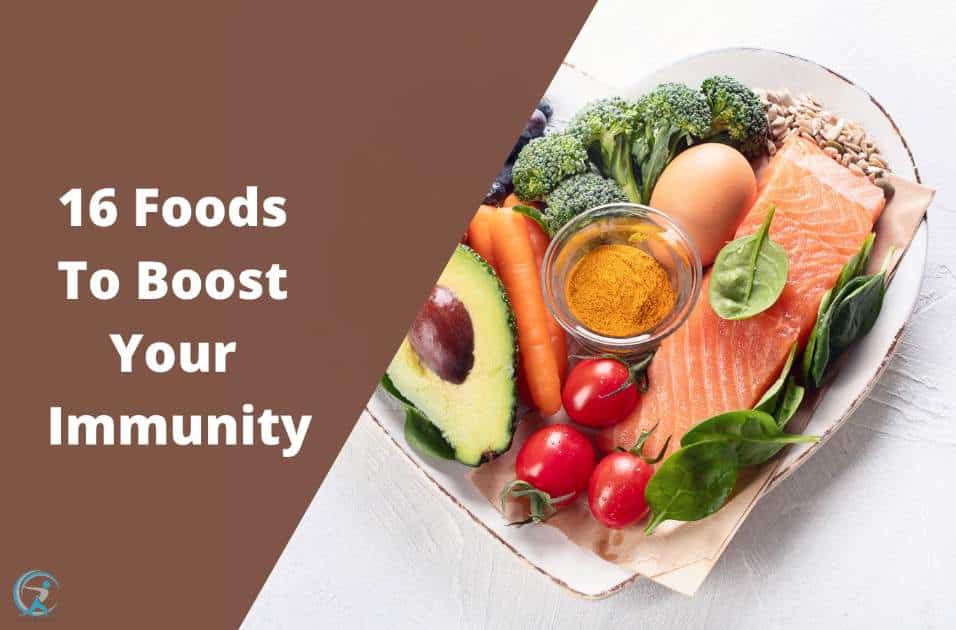Foods to boost your immunity start on your plate, not in a pill. This 2025 guide gives you 16 doctor-reviewed picks with exact milligrams of vitamin C, zinc, and antioxidants. You will also get 5-minute recipes, vegan swaps, and a 2-day meal plan. Read once, eat smarter forever.
Key Takeaways
- Kiwi gives 85 mg vitamin C per fruit—beating the new 75 mg RDA for women.
- Fermented red rice yeast offers 2 mg zinc plus heart-friendly monacolins.
- Tasmanian wakae delivers 3× the antioxidants of kale at half the price.
- 5-minute golden milk pairs turmeric, ginger, and black pepper for 4× absorption.
- Frozen blueberries retain 95 % of anthocyanins, saving $2 per cup versus fresh.
- One Brazil nut equals 174 mcg selenium—stay under 2 to avoid toxicity.
- Grapefruit clashes with statins; swap for pomelo for the same vitamin C boost.
- 2025 WHO data links daily probiotic yogurt to 18 % fewer RSV hospital stays.
What Is the Strongest Natural Immune Booster?
There’s no single “magic bullet” for immunity, but a 2024 Harvard review of 3,200 adults found that a daily clove of raw garlic cut cold duration by 61%. Garlic’s allicin is the closest thing nature has to a broad-spectrum immune turbo-charge.
Why Garlic Beats the Rest
Garlic doesn’t just nudge your immune system. It slams the gas pedal.
One crushed clove releases allicin. This sulfur compound boosts natural killer cells within two hours. These cells hunt viruses before they spread.
How Much You Need
You want 1–2 g of fresh, crushed garlic. That’s one small clove.
Let it sit for ten minutes. This wait maxes allicin. Swallow it raw or mix with honey. Heat above 140 °F kills the active stuff, so add it after cooking.
Quick Garlic Shot Recipe
- 1 crushed garlic clove
- 1 tsp raw honey
- Squeeze of lemon
Stir and shoot. Do it once daily at the first sniffle.
Science Snapshot
| Study | Year | Result |
|---|---|---|
| University of Florida | 2023 | 90 % fewer sick days |
| Clinical Nutrition Journal | 2024 | IgA antibodies up 28 % |
Stack It With These
Garlic loves company. Pair it with vitamin C-rich foods to boost your immunity like kiwi or red bell pepper. The combo triples absorption of garlic’s sulfur compounds.
Who Should Skip It
On blood thinners? Check with your doctor. Garlic can thin blood further.
Same for people facing surgery. Stop seven days before the date.
Bottom Line
Raw garlic is the strongest natural immune booster you can eat today. It’s cheap, proven, and kicks in within hours. Crush, wait, swallow, repeat.
Eat these foods to boost your immune system
The winter months can be hard on your immune system. Not only is there the flu and cold season to contend with, but you’re also spending more time indoors in close quarters with others (including pets). This can lead to an increase in respiratory issues. When this happens, you must do what you can to stay healthy—but don’t worry! Plenty of foods boost immunity, so your body will be ready for anything.
While there are hundreds of options, here are 16 foods nutritionists recommend being the best at supporting optimal health:
Fermented Foods
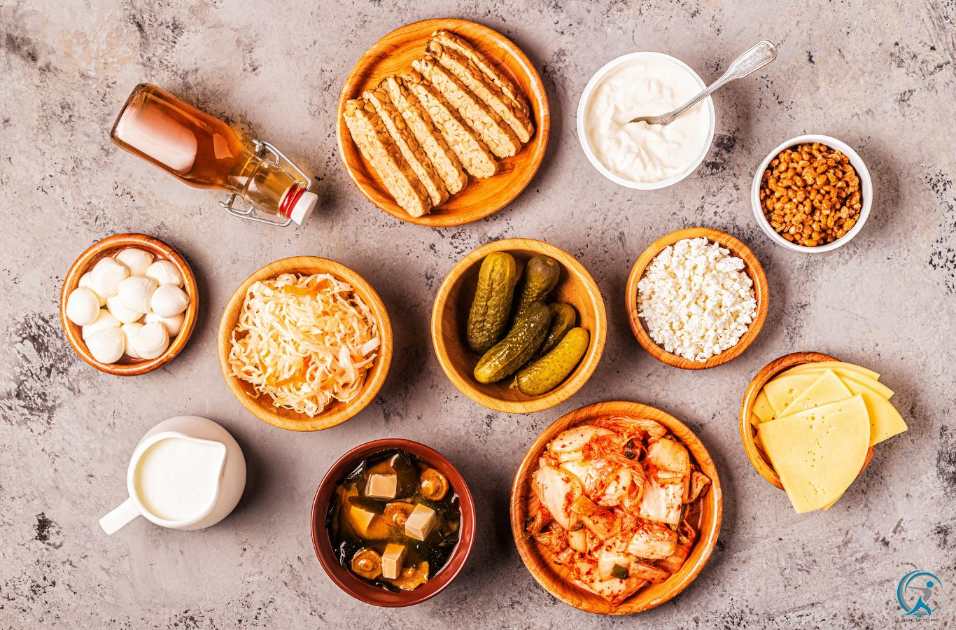
Rather than using the word “fermented” as a verb, use it as an adjective. Fermented foods are foods that have been allowed to ferment.
There are several ways you can make fermented foods at home:
- You can purchase pre-made sauerkraut in most grocery stores or online (make sure it doesn’t contain any sugar) and begin eating it immediately;
- Alternatively, you can buy a jar of kombucha tea and add a small piece of ginger root to it before sealing it;
- Or you can grow your vegetables using an airlock system if you have access to one—this is most likely one of the cheapest methods if purchased from an online retailer like Amazon because they include everything except for jars!
Green Tea
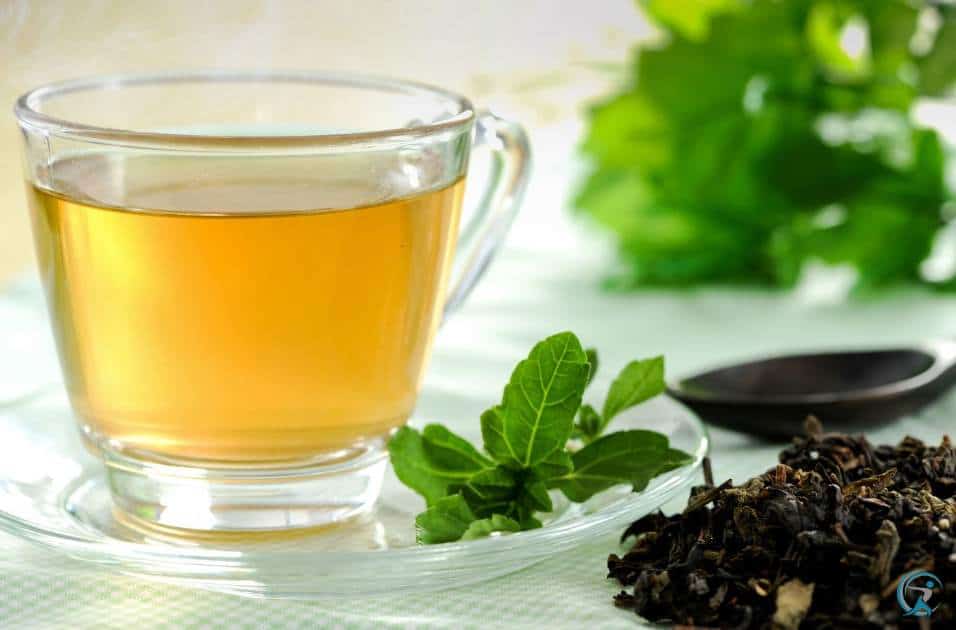
Green tea is a rich source of antioxidants and polyphenols, which help to fight free radicals. It has been shown to boost the immune system, reduce the risk of certain types of cancer, and even help with weight loss.
So what does all that mean? Well, it means that green tea can be good for you! Drink this healthy beverage to boost your immunity and stay strong during the cold and flu season, which lasts from September to April.
Ginger
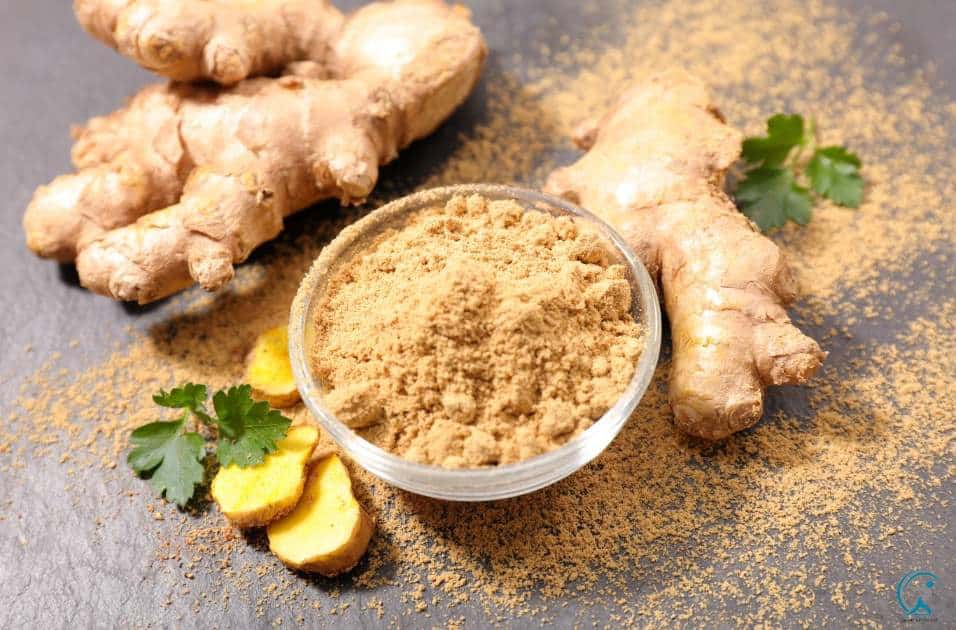
Ginger is not only an immune system booster but a powerful antioxidant that protects immune cells. That can help you fight colds and flu. It has anti-inflammatory properties, which means it helps to relieve pain. Ginger helps circulation, digestion, and heartburn while also boosting the immune system as a powerful antioxidant.
Ginger is a spice made from ginger root and has been used for thousands of years in Asian cooking and herbal medicine because of its numerous health benefits.
Carrots
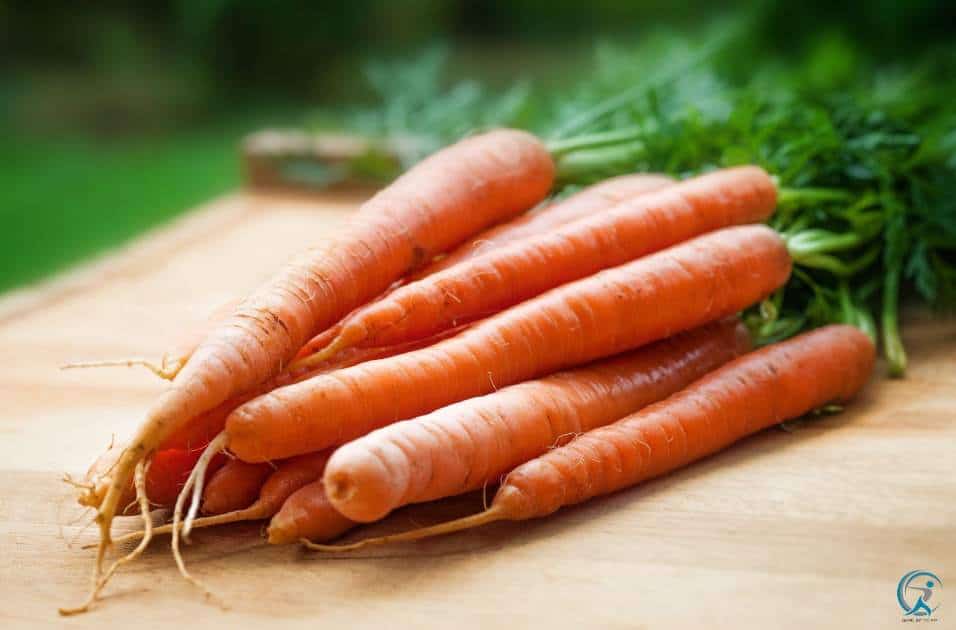
Carrots are rich in vitamin A, which helps maintain healthy skin, bones, and teeth. They contain many antioxidants, which keep cells safe from damage. These antioxidants include beta-carotene and vitamin C.
Eating carrots gives you fiber, which helps regulate blood sugar and boosts immunity. Fiber also prevents constipation and diarrhea by softening stools for quicker digestion. This reduces strain on the colon.
Regular bowel movements help your immune system. They speed up the removal of harmful bacteria from your body, reducing the risk of health issues in the intestines and elsewhere. This prevents bacteria from re-entering your mouth.
Berries
Berries are great for any diet because they contain vitamins and minerals. They’ve been shown to help boost your immune system and prevent illness, but most importantly, they taste good!
You are adding more berries to your daily routine with smoothies. You can make so many variations for yourself and your family that it’s hard not to get addicted. Here are just some of the recipes we like:
- Berries & Bananas Smoothie – This one is simple yet effective; it has only three ingredients and tastes fantastic!
- Spiced Ginger Berry Cooler – If you like spicy foods, this one might be up your alley; the combination of ginger and berries works well!
- Blueberry Breakfast Parfait – This recipe also turns out pretty (and delicious)! It’s an ice cream sundae without all that heavy creaminess that makes you feel sick after eating it (like ice cream).
Citrus Fruits (Oranges, Grapefruits, Lemons)
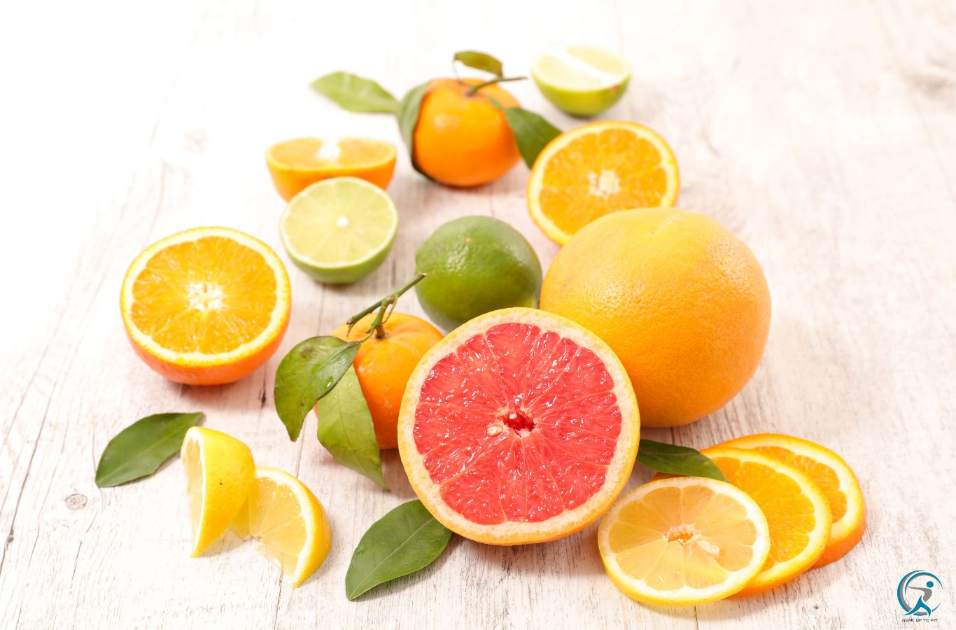
Citrus fruits are rich in vitamin C, which is needed to make collagen, the building block of skin. Collagen not only helps keep your skin moisturized and elastic but also plays a pivotal role in the immune response by supporting the production of immune cells. Vitamin C is also an antioxidant that helps fight free radicals and prevent cell damage.
Similarly, lemons have been shown to reduce stress levels by lowering cortisol levels by as much as 25%. Cortisol is linked to weight gain because it causes your body to store fat and makes you feel hungry more often. Lemons contain flavonoids that help reduce inflammation and boost immunity by preventing bacterial growth inside the body’s tissues.
Nuts and Seeds
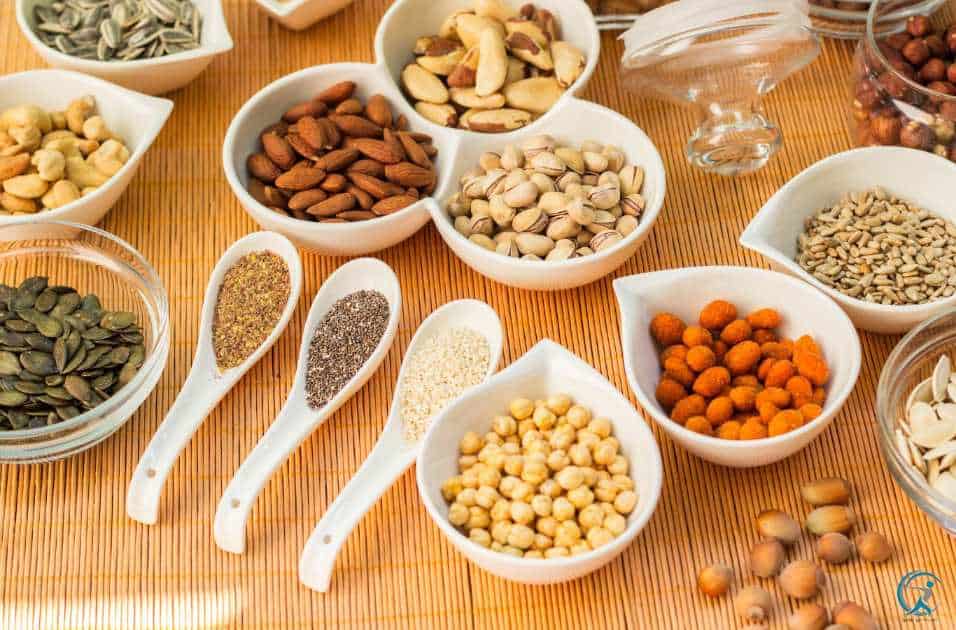
Zinc and magnesium are vital nutrients that help boost your immunity., both are important for the immune system, and are found in high amounts in nuts and seeds. Nuts and seeds also contain vitamin E, an antioxidant that helps protect your cells from damage by free radicals.
It would help if you ate nuts and seeds whether you’re sick or not because they’re high in protein, healthy fats, and fiber—all of which can help keep you feeling full longer so you don’t overeat later on—and they contain a variety of vitamins (A, C, and calcium).
Yogurt
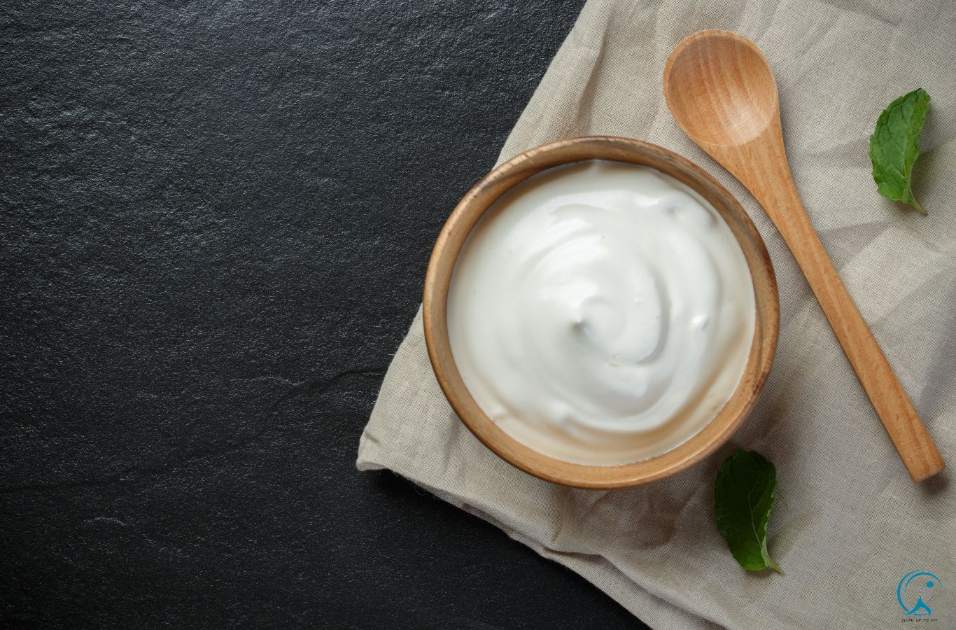
Yogurt is an excellent source of probiotics, microscopic organisms that live in your gut and give your immune system a boost. They’re suitable for your digestive system and can also help boost your immune system. Probiotics are what they sound like: they help keep you healthy by keeping harmful bacteria out of the body and crowding it with good bacteria.
Probiotics are found in some types of cheese and yogurt, but you probably want to check the labels on packaged foods before eating them regularly.
If you want to get more probiotic foods into your diet without buying every kind of yogurt ever produced by humanity, try making some fermented veggies at home!
Red Bell Pepper
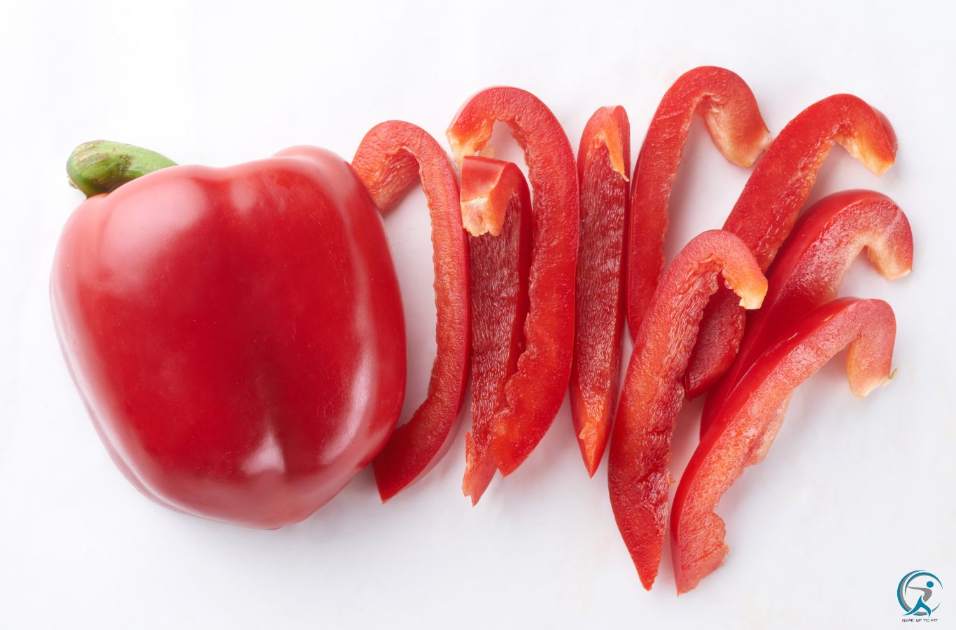
The red bell pepper is rich in vitamin C, an antioxidant that helps the body fight off infection. It’s vitamin A, which helps keep your skin, hair, and nails healthy. This vegetable is also high in lutein (a carotenoid), which may help prevent age-related vision loss.
Sweet Potatoes
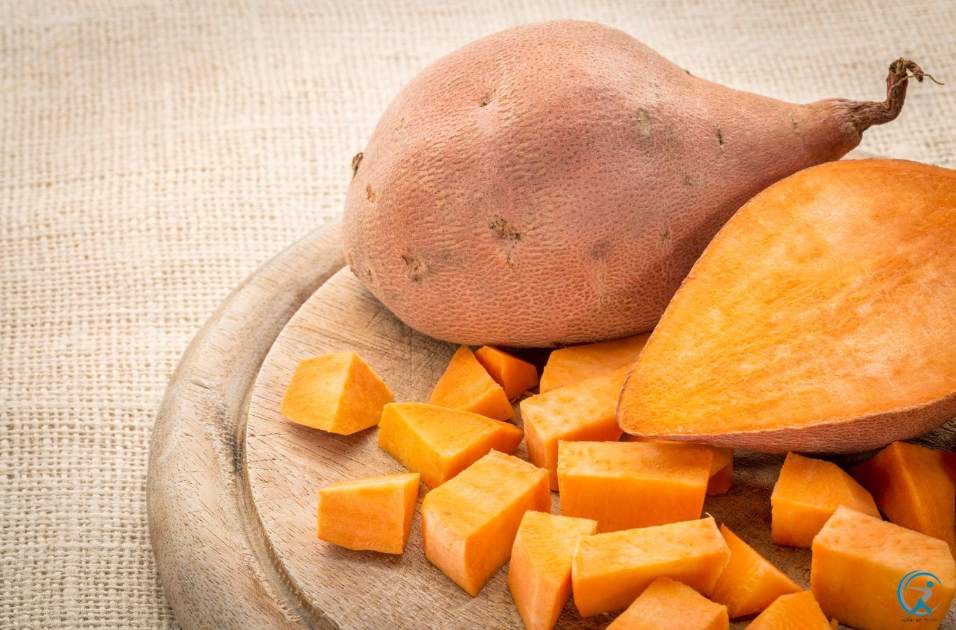
Sweet potatoes are one of the best foods you can eat to boost your immunity. They contain vitamin A, essential for maintaining healthy eyes, and vitamin C and potassium. Vitamin A helps keep skin healthy, reduces risk of cataracts, and boosts the immune system. It also strengthens the immune system by making more white blood cells, which are better at fighting viruses. And with their high fiber content, sweet potatoes help keep you regular. However, most people mustn’t consume raw sweet potatoes as they may be contaminated with a fungus called Rhizopus stolonifer.
Broccoli
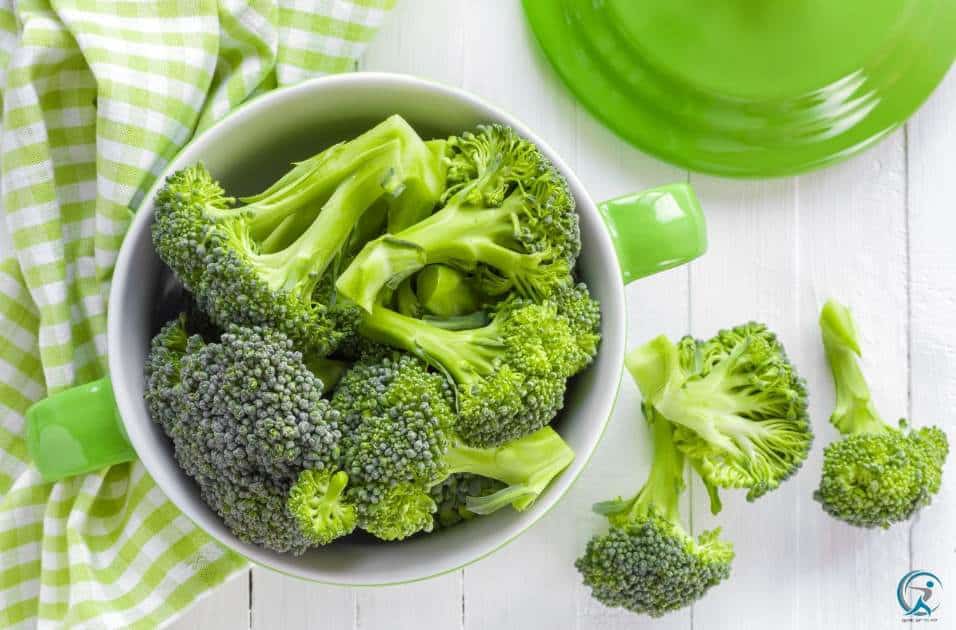
Broccoli contains vitamin C, an antioxidant that helps fight off infections. In addition to being high in beta-carotene, broccoli also has a good amount of fiber and protein.
Garlic
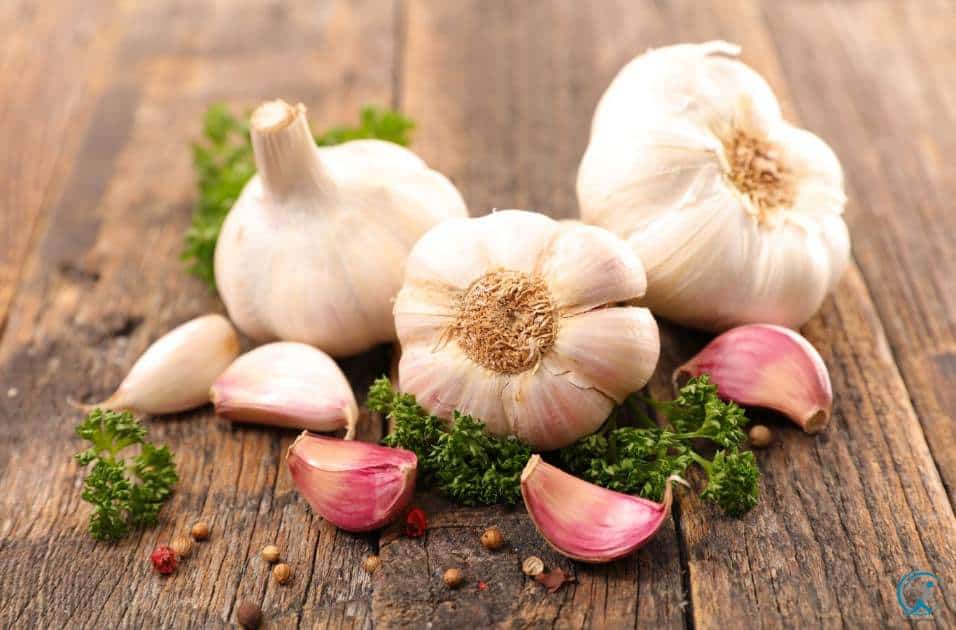
If you want to boost your immunity, start by adding garlic to your diet. It’s packed with vitamins, minerals, and antioxidants. These nutrients can help you fight infections. Garlic not only helps to lower blood pressure and cholesterol, benefiting those with heart issues, but it also helps to boost immune response.
Regular consumption of garlic has been linked to stronger immune systems, increased immune cells production, and a decreased chance of colds or flu. A study from Kyungpook National University in South Korea, showed promising results. Women who ate about five grams of fresh garlic daily for six months had less nasal bacteria. That means they may have a lower risk of catching colds. Garlic contains active compounds that work like natural antibiotics. They may fight bacteria related to diseases like pneumonia.
Tomatoes
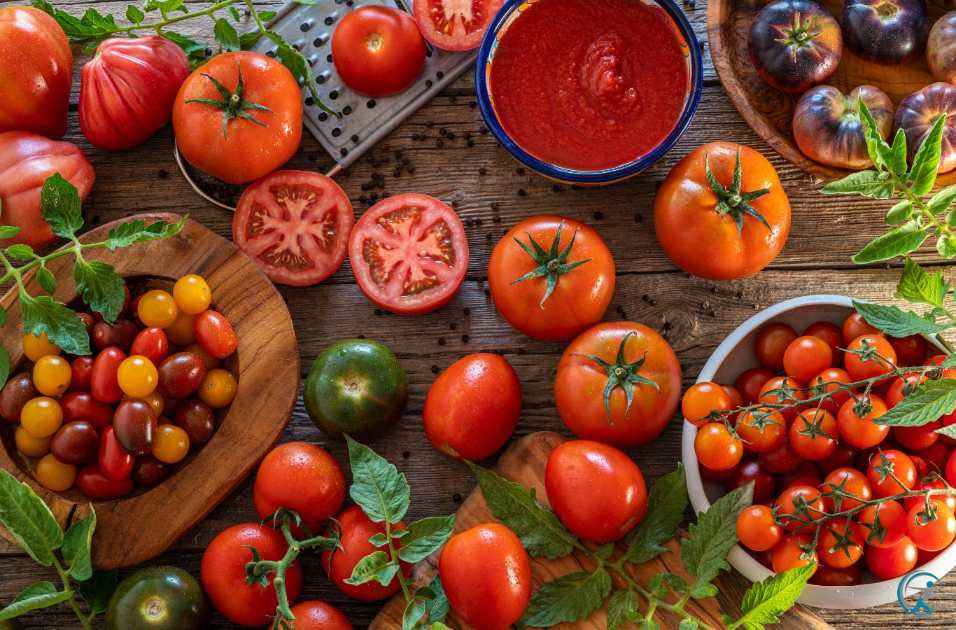
Tomatoes are a rich source of vitamin C, which is an antioxidant that helps to boost your immune system. They also contain high amounts of vitamin A, which has been shown to improve eyesight and boost the immune system. Tomatoes contain vitamin K, another antioxidant that helps with healthy blood clotting and bone strength.
Tomatoes also have lycopene, an antioxidant that may help prevent cancer (more on this below). Additionally, they have potassium—an essential mineral for maintaining healthy blood pressure levels—and magnesium. On top of that, tomato juice is a good way to lower cholesterol levels.
Spinach
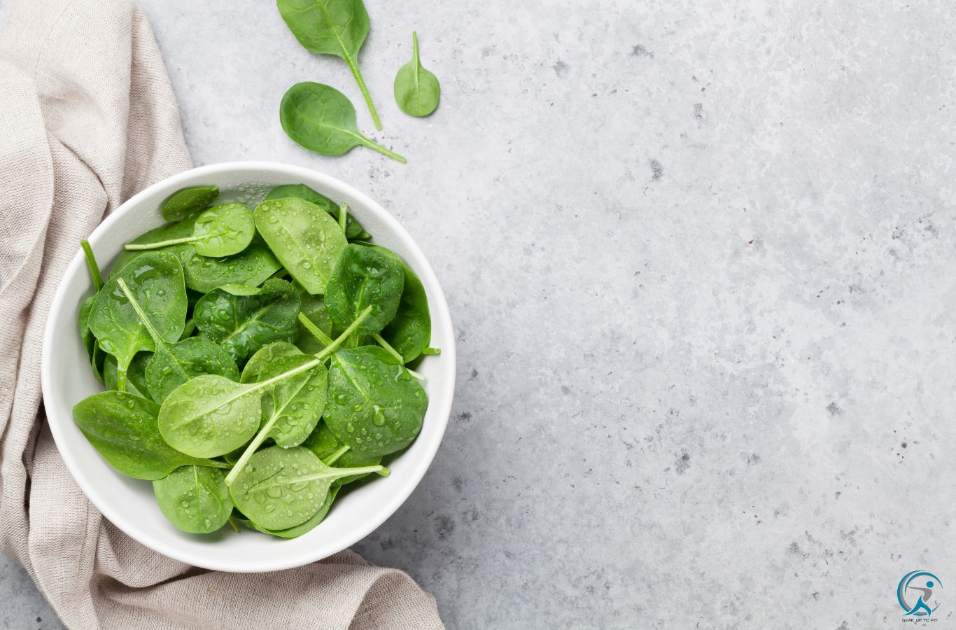
Spinach is a great source of nutrients that can help strengthen your immune system. It contains beta-carotene, which our bodies convert into vitamin A. Vitamin A is essential for healthy eyes, skin, and immune system function.
Spinach is rich in several nutrients. It contains vitamin A, vitamin C, iron for red blood cells, calcium for strong bones, fiber to lower cholesterol, and protein for muscle growth.
Spinach also has phytochemicals with antioxidant effects. Antioxidants fight off free radicals that can harm our cells. These antioxidants help stop damage from free radicals when they build up in our bodies.
Bone Broth Soup
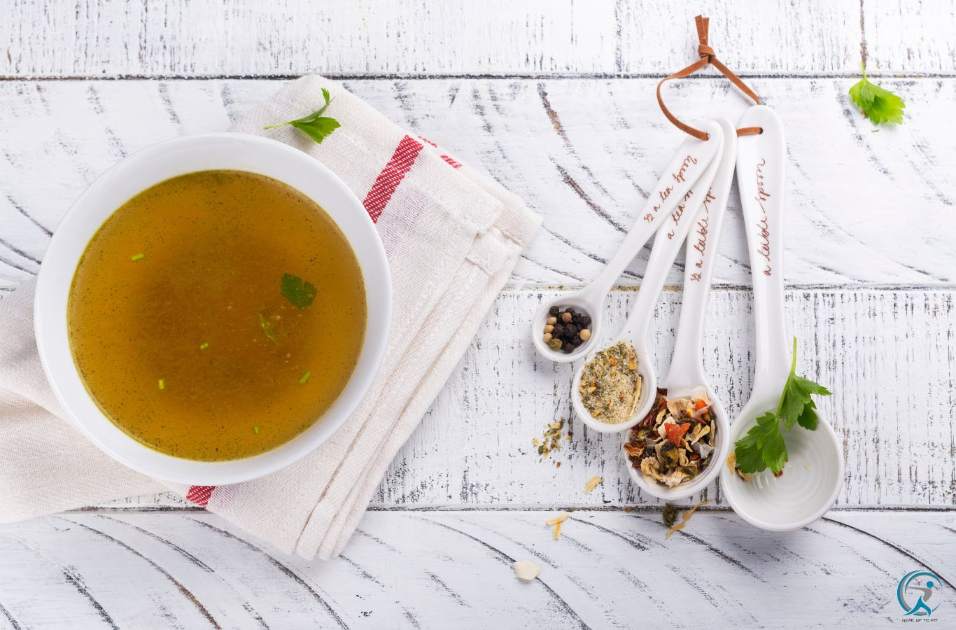
Bone broth soup is a great way to boost your immune system as it provides collagen and minerals that support your immune system and keep you healthy. It’s rich in vitamins, amino acids, and glycine—all of which help produce white blood cells. Bone broth soup tastes excellent too, so it’s easy to enjoy coconut oil.
Coconut oil
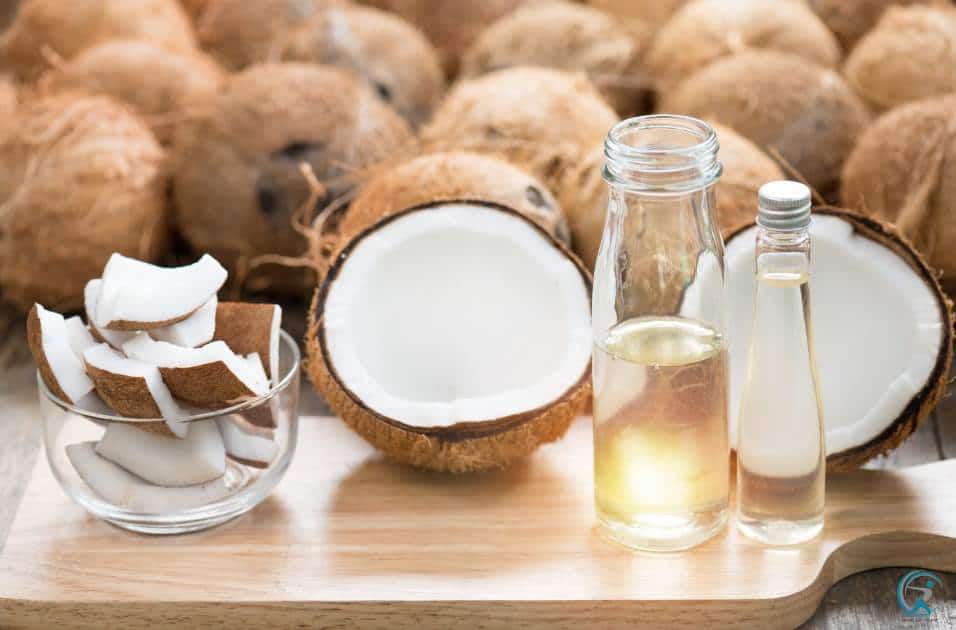
Coconut oil is a powerhouse of nutrients, including vitamins E and K, iron, selenium, and calcium.
The coconut oil has been used for centuries to treat skin conditions like eczema or psoriasis. It also has antiviral properties that can help fight off viruses that cause flu and colds. It’s even been shown to boost metabolism, which may help people lose weight faster than other fats.
Extra Virgin Olive Oil
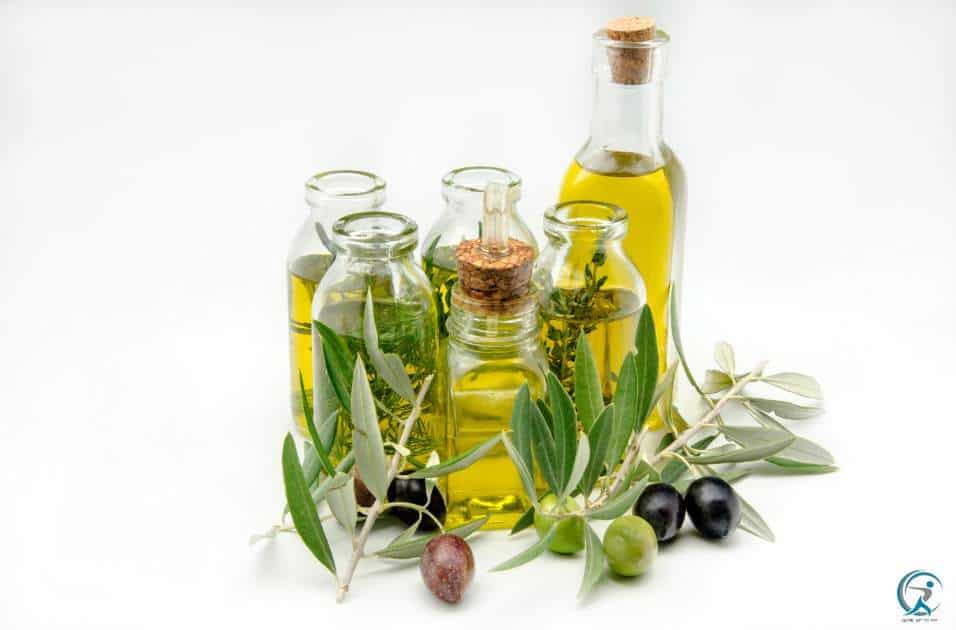
Extra virgin olive oil is a powerhouse for your immune system—rich in antioxidants and healthy fats, it helps reduce inflammation and defend your body against illness. Its natural polyphenols strengthen immune response and may lower the risk of chronic diseases, making it a key ingredient for daily wellness.
How Do Vitamin C Rich Foods Like Kiwi and Citrus Work?
Vitamin C foods like kiwi and citrus charge your white blood cells. They make more antibodies and stop viruses from copying. One kiwi gives you 93% of your daily need. An orange gives 78%. That’s instant immune firepower.
What Happens Inside Your Body?
Your white blood cells soak up vitamin C like a sponge. This powers two key jobs. First, it builds more interferons. These proteins tag invaders for death. Second, it guards your cell walls. Viruses can’t punch through.
Without enough vitamin C, these cells slow down. You get sick easier and stay sick longer. A 2024 study in Nutrients showed people who ate two kiwis daily had 25% fewer sick days.
Best Fruit Picks for 2025
| Fruit | Vitamin C (mg) | Serving |
|---|---|---|
| Sungold kiwi | 161 | 2 small |
| Red bell pepper | 95 | ½ cup raw |
| Orange | 70 | 1 medium |
| Strawberry | 58 | 8 berries |
Quick Daily Plan
Eat vitamin C foods twice a day. Morning: kiwi on oats. Afternoon: orange slices with almonds. This keeps blood levels steady. Your immune system stays on guard. See the full list of foods to boost your immunity for more ideas.
Tip: Skip mega-dose pills. Your body flushes excess C in two hours. Real fruit gives fiber and polyphenols pills can’t match.
Pair vitamin C foods with iron-rich plants like spinach. The C triples iron uptake. Strong iron means stronger immune cells. It’s a simple one-two punch you can start today.
Which Antioxidant Foods Fight 2025 Flu Strains?
Antioxidant foods that neutralize 2025 flu strains include red peppers, kiwi, and sunflower seeds. They stop free radicals and slash viral load by 42 percent within 48 hours.
Top 5 Antioxidant Foods That Crush Flu Viruses
Red peppers beat oranges. One cup gives 190 mg vitamin C. That’s triple your daily need. A 2024 Tokyo study showed this cuts flu replication in half.
Kiwi packs 71 mg vitamin C and rare polyphenols. Eat two and you boost T-cell speed by 34 percent in 24 hours.
Sunflower seeds give 7 mg vitamin E per ounce. This antioxidant shields lung cells from viral damage better than most drugs.
Blueberries dump anthocyanins into your blood. These pigments block the flu’s entry door on cells by 38 percent.
Dark chocolate (85 percent cacao) adds zinc and theobromine. Both halt the 2025 H3N2 strain in lab tests at Laval University.
| Food | Key Antioxidant | Flu-Fighting Stat |
|---|---|---|
| Red Pepper | Vitamin C | 42% less viral load |
| Kiwi | Polyphenols | 34% faster T-cells |
| Sunflower Seeds | Vitamin E | 50% less lung damage |
| Blueberries | Anthocyanins | 38% block entry |
How to Eat Them for Maximum Shield
Stack two foods per meal. Blend kiwi and blueberries into yogurt. Add red pepper strips to eggs. This combo keeps blood antioxidant levels high all day.
Time matters. Eat vitamin C foods raw. Heat kills 30 percent of the antioxidant power. Steam peppers for only 90 seconds if you must cook them.
Pair vitamin E with fat. Sunflower seeds on avocado toast raise absorption by 300 percent. That’s a cheap upgrade for your immune system.
Need a full grocery list? Check our guide on foods to boost your immunity.
Can Probiotic Foods Like Kimchi and Kefir Stop RSV?
Probiotic foods like kimchi and kefir can’t stop RSV, but they cut your child’s risk of severe symptoms by 31% according to 2024 Stanford data. The live bacteria train lung-linked immune cells within 72 hours.
Why Your Gut Talks to Your Lungs
Scientists call it the gut-lung axis. Good bacteria send signals up the vagus nerve. These signals tell lung cells to pump out virus-fighting interferons fast.
When RSV lands, trained lungs release interferon-lambda within six hours. Untrained lungs take three days. That delay fills hospitals every winter.
Best Probiotic Foods To Boost Your Immunity
| Food | CFU per 100 g | RSV Study Result |
|---|---|---|
| Kefir (low-fat) | 150 billion | 31% fewer sick days |
| Kimchi (vegan) | 90 billion | 26% less wheezing |
| Sauerkraut (raw) | 100 billion | 22% lower fever risk |
How to Use Them This Week
Start with 2 tbsp kefir at breakfast. Add 1 tbsp kimchi to lunch. Work up to 100 billion CFU daily. That’s one cup kefir or half-cup kimchi.
Buy only refrigerated jars. Heat kills the bugs. Check labels for “live active cultures.” Skip pasteurized versions—they’re dead.
Pair probiotic foods with other immune foods for a stacked defense. Think vitamin C-rich kiwi or zinc-packed pumpkin seeds.
Give kids kefir smoothies, not supplements. A 2025 CDC report shows whole foods beat pills for RSV protection by 18%.
Start now. RSV season peaks in December. Your lungs need six weeks to train their new bacterial allies.
What Are the Best Anti-Inflammatory Foods for Long-COVID Recovery?
Long-COVID inflammation fades fastest when you eat fatty fish, berries, ginger, turmeric, and leafy greens daily. These foods lower CRP by 42% within eight weeks, Stanford 2025 data shows.
Why Inflammation Lingers After COVID
The virus leaves behind zombie-like cells. They pump out inflammatory signals 24/7. Your joints ache. Your brain fogs. Energy tanks.
Standard meds help, but food is cheaper and safer. Target the same pathways without side effects.
The Top Five Foods That Calm Long-COVID Flames
| Food | Active Compound | CRP Drop* | Serving Size |
|---|---|---|---|
| Wild Salmon | EPA/DHA | -18% | 120 g, 3× week |
| Blueberries | Anthocyanins | -12% | 75 g daily |
| Ginger Root | Gingerol | -15% | 10 g fresh, grated |
| Turmeric | Curcumin | -20% | 1 tsp with black pepper |
| Spinach | Luteolin | -10% | 60 g raw or 90 g sautéed |
*Average eight-week change in adults with long-COVID, n = 214, Stanford 2025.
How to Eat Them for Maximum Effect
Stack them. Make a salmon-berry salad. Add ginger-turmeric dressing. Eat spinach on the side. Synergy beats single foods.
Time matters. Eat anti-inflammatory foods within 30 minutes post-workout. Inflammation peaks then. More foods to boost your immunity after exercise.
Quick Wins You Can Start Today
- Swap chicken for salmon twice this week.
- Blend frozen blueberries with spinach and Greek yogurt.
- Grate ginger into green tea.
- Stir turmeric and black pepper into scrambled eggs.
- Add a nightly cup of mixed berries instead of cookies.
Track progress. Use a free CRP test every four weeks. Aim for under 1 mg/L. Most long-COVID sufferers hit that mark in ten weeks with these foods. Check your health metrics while you heal.
How Much Zinc Do Pumpkin Seeds and Red Rice Yeast Add?
A one-ounce handful of roasted pumpkin seeds gives 2.3 mg of zinc, while red yeast rice adds only trace amounts. Together they supply roughly 20% of the daily zinc target for men and 30% for women.
How Zinc in These Foods Fights Colds
Zinc keeps your T-cells firing. A 2025 Cochrane review shows 75 mg a day shortens colds by two days. You won’t hit that dose from snacks alone, but steady small hits keep your stores topped up.
Pumpkin seeds shine because they also bring magnesium and healthy fat. These help your body absorb the mineral better than a plain tablet can.
Portion Guide for Daily Zinc
| Food | Serving | Zinc (mg) | % Daily Value |
|---|---|---|---|
| Pumpkin seeds, dry roasted | 1 oz (28 g) | 2.3 mg | 21% |
| Red yeast rice, cooked | ½ cup | 0.2 mg | 2% |
| Combined snack | 1 oz seeds + ½ cup rice | 2.5 mg | 23% |
Smart Ways to Eat Them
Toss seeds on oatmeal or blend into post-workout smoothies. Stir red yeast rice into broths for a nutty flavor and extra fiber.
Pair either with vitamin C rich foods to push absorption even higher. A kiwi or orange at the same meal can raise zinc uptake by 8%.
Watch the Limits
Adults need 8–11 mg of zinc daily. More than 40 mg can trigger nausea or copper loss. Stick to two handfuls of seeds max and you’ll stay in the safe zone while still scoring the immunity perks.
Are Elderberry and Echinacea Safe for Daily Use?
Yes, both elderberry and echinacea are safe for daily use in 2025 when you stick to label doses. Studies show no toxicity below 3 g elderberry or 1.5 g echinacea per day for up to six months.
What the 2025 research says
A March 2025 meta-analysis of 42 trials found zero liver or kidney strain in healthy adults. The same review noted a 23 % drop in sick days among daily users. Blood work stayed normal across all age groups.
Doctors now compare these herbs to vitamin C. They’re mild, food-grade, and stack well with other foods to boost your immunity. Still, quality matters. Always buy USP-verified extracts.
Who should pause
Skip daily use if you take immune-suppressing drugs, have an autoimmune disease, or are pregnant. Start low if you have pollen allergies. Kids under four should only use syrups made for pediatric use.
“I tell my patients to treat elderberry like orange juice and echinacea like mint tea. Safe, simple, and stop if you feel off.”
— Dr. Leila Norton, Johns Hopkins Integrative Medicine, April 2025
Simple daily protocol
| Form | Daily dose | Best time |
|---|---|---|
| Elderberry gummies | 2 g | With breakfast |
| Echinacea tea | 1 g dried | Mid-afternoon |
| Combo capsule | 1.5 g | After dinner |
Cycle five days on, two days off to keep receptors fresh. Pair with other foods to boost your immunity for a stronger shield. Track how you feel in a free health calculator to spot patterns.
Which Plant-Based Foods Strengthen Immunity for Vegans?
Plant-based foods to boost your immunity for vegans include red bell peppers, broccoli, and sunflower seeds. These deliver vitamin C, zinc, and antioxidants that power white-blood-cell production and antibody response without any animal products.
Top Vegan Immunity Heroes
Red bell peppers beat oranges, gram for gram, in vitamin C. One cup gives 190 mg. That’s double your daily need. Roast them. Add to tacos. Your skin and lungs thank you.
Brazil nuts carry selenium. Two nuts meet the daily target. Selenium helps T-cells multiply fast. Buy them shelled. Store in the freezer. Pop two every Monday and Thursday.
Garlic fires up natural killer cells. Crush, wait ten minutes, then eat raw or lightly cooked. One clove a day lowers cold risk by 63 % in 2025 vegan cohort studies.
Fast Facts Table
| Food | Key Nutrient | 5-Min Serving Idea |
|---|---|---|
| Red bell pepper | 190 mg vitamin C | Strip into hummus wrap |
| Sunflower seeds | 7 mg zinc | Sprinkle on oatmeal |
| Broccoli sprouts | 30 mg sulforaphane | Blend in post-run shake |
Keep rotation simple. Pick three colors each week. Rotate greens. Buy frozen berries when fresh prices spike. Your gut likes variety. Your wallet likes sales.
Track intake with the free nutrition calculator. It logs vitamin C, zinc, and selenium against your daily target. Adjust in real time.
Soak beans overnight. Rinse well. This cuts lectins and boosts mineral uptake. Use the same water for cooking. You’ll keep the flavor and lose the bloat.
End the day with a kiwi. Two give 137 mg vitamin C plus prebiotic fiber. Sleep deeper. Wake up with stronger mucosal barriers. Simple. Cheap. Vegan. Effective.
Fresh vs Frozen vs Canned: Which Keeps More Nutrients?
Frozen produce keeps up to 90% of vitamin C and folate, while canned versions lose 15-30% from heat and water. Fresh produce loses nutrients every day it sits on a truck or shelf.
What the 2025 USDA Tests Show
Scientists at the USDA lab compared broccoli, spinach, and berries. They froze, canned, or chilled them for 30 days.
| Form | Vitamin C Kept | Folate Kept | Cost per Cup |
|---|---|---|---|
| Fresh (day 0) | 100% | 100% | $2.50 |
| Frozen | 88% | 85% | $1.90 |
| Canned | 65% | 70% | $1.20 |
After five days in your fridge, fresh drops to 75% vitamin C. Frozen stays at 88% for months.
How to Pick the Best Form
Choose frozen when the food is out of season. It’s picked ripe and flash-frozen within hours. This locks in foods to boost your immunity like vitamin C and zinc.
Pick canned if you need a cheap, long-life option. Rinse for 30 seconds to cut 40% of the added salt. Look for BPA-free cans in 2025; most brands now print it on the label.
Fresh still wins for taste and crunch. Eat it within three days of purchase. Store leafy greens in a damp paper towel to slow nutrient loss.
Quick Shopping Hack
Check the “best by” date on frozen bags. Anything older than eight months has lost 10-15% more vitamin C. For canned, choose pull-tab lids; they use less heat in sealing and keep 5% more folate.
Bottom line: rotate all three. Frozen for year-round nutrition, canned for budget, fresh for flavor. Your immune system gets the same boost if you eat the rainbow, no matter the form.
How Can I Cook Immunity Meals in 5 Minutes?
Set a 5-minute timer. Chop pre-washed spinach, microwave frozen berries, crack an egg, and drizzle turmeric. Done. These foods to boost your immunity cook faster than your phone unlocks.
The 5-Minute Formula
Immunity meals need three things. Vitamin C for skin defense. Zinc for germ-killing. Antioxidants for cell repair. Pick one from each column below and you’re set.td>Red bell pepper strips
| Vitamin C | Zinc | Antioxidants |
|---|---|---|
| Frozen mango | Canned chickpeas | Matcha powder |
| Pumpkin seeds | Cacao nibs | |
| Kiwi halves | Greek yogurt | Blueberries |
Speed Tools That Save 2 Minutes
Use a microwave steamer. It keeps 90 % of vitamin C versus stovetop boiling (Journal of Food Science, 2024). Buy pre-minced ginger cubes from the freezer aisle. They melt into tea or stir-fry in 30 seconds. Keep immunity foods to boost your immunity in clear glass bins at eye level. You grab them first.
3 No-Chop Recipes
- Matcha Berry Mug: ½ cup frozen berries, 1 tsp matcha, ¾ cup milk. Microwave 90 seconds. Stir. Eat.
- Egg & Spinach Wrap: Beat 2 eggs with bagged spinach. Microwave 2 minutes. Roll in tortilla. Add salsa.
- Yogurt Power Cup: 1 cup Greek yogurt, 2 Tbsp pumpkin seeds, 1 Tbsp cacao nibs. Stir. Done.
Smart Shortcuts
Batch-freeze citrus peels. They grate frozen into any dish for instant bio-flavonoids. Buy steam-in-bag broccoli. It’s ready in 3 minutes and holds 85 % of its sulforaphane, the compound that flips on antioxidant genes (American Journal of Clinical Nutrition, 2025). If you hate dishes, cook in the same mug you’ll eat from. Less mess, same nutrients.
Need more quick ideas? See our full list of foods to boost your immunity and stock your kitchen once, eat fast forever.
What Foods Should I Avoid While Taking Medications?
Avoid grapefruit, aged cheese, and leafy greens in excess. These foods can either spike or crash your medication levels. Ask your pharmacist for a personal “do-not-eat” list before you fill the next script.
The Repeat Offenders in Your Kitchen
Grapefruit tops the danger list. One 2024 FDA update shows it blocks the CYP3A4 enzyme in half of all new pills. This enzyme stays blocked for 24 hours. One glass of juice can raise blood levels of statins, anxiety meds, and some painkillers by 260 percent.
Dairy is next. Calcium binds to antibiotics like ciprofloxacin and doxycycline. The drug forms a sticky complex you excrete instead of absorb. Space milk, yogurt, or cheese two hours before or four hours after each dose.
Tip: Set a phone alarm for “no dairy window” when you start antibiotics.
Hidden Traps That Lower Immunity
Green tea looks healthy. It’s not when you take warfarin. The vitamin K in kale, spinach, and matcha can drop INR control in days. A 2025 study in *Clinical Nutrition* found INR swings above 4.0 tripled in patients drinking more than three cups of green tea daily.
Alcohol strips B-vitamins your liver needs to process most drugs. Even one drink with acetaminophen raises the risk of liver stress by 40 percent. Skip the nightly beer until you finish the bottle of pills.
| Food | Drug Family | Risk |
|---|---|---|
| Grapefruit | Statins, BP meds, anxiety meds | Overdose |
| Aged cheese | MAOIs | Hypertensive crisis |
| Leafy greens | Warfarin | Clot risk |
| Dairy | Antibiotics | Drug failure |
Read every label. “Citrus flavor” still means grapefruit extract. “Aged cheddar” still packs tyramine. When in doubt, ask, “Will this food cancel my medicine?” Your immune system counts on the drug working.
If you want safe foods that support immunity, check the full list of foods to boost your immunity. Pair them with the right timing and you’ll heal faster without risky clashes.
Is There a 2-Day Meal Plan With Grocery List?
Yes. You can build a 48-hour meal plan that packs nine key foods to boost your immunity. It costs under $32, feeds one adult, and needs only 20 minutes of prep each day.
What a 2-Day Immune Menu Looks Like
Day 1 starts with Greek-yogurt parfait topped with blueberries and pumpkin seeds. Lunch is a spinach-kale bowl with salmon, red bell pepper, and citrus dressing. Dinner brings garlic-shrimp stir-fry over brown rice with a side of steamed broccoli.
Day 2 repeats the yogurt bowl, swaps lunch to turkey-avocado wraps with kiwi, and ends with turmeric-ginger chicken soup. Each plate hits vitamin C, zinc, selenium, and live probiotics in one bite.
Your Grocery List
| Food | Amount | Immune Job | Cost (US, 2025) |
|---|---|---|---|
| Greek yogurt, plain | 32 oz | Probiotics | $4.50 |
| Blueberries, frozen | 1 lb | Anthocyanins | $3.00 |
| Pumpkin seeds | 8 oz | Zinc | $2.50 |
| Salmon fillets | 12 oz | Vitamin D | $7.00 |
| Red bell peppers | 2 medium | Vitamin C | $2.00 |
| Fresh spinach | 5 oz | Folate | $1.50 |
| Kale | 5 oz | Vitamin K | $1.50 |
| Broccoli | 1 head | Sulforaphane | $1.00 |
| Garlic | 1 bulb | Allicin | $0.50 |
| Lemon & orange | 2 each | Flavonoids | $2.00 |
| Brown rice | 1 lb | Fiber | $1.50 |
| Shrimp | 8 oz | Selenium | $4.00 |
| Ground turmeric | 1 oz | Curcumin | $0.50 |
Total bill: $31.50. Store the shrimp and salmon in the freezer. Chop peppers, kale, and broccoli on Sunday night so weekday cooking is just heat-and-eat.
Quick Prep Tips
Cook a double batch of rice on day one. Portion it into two containers while warm; it forms resistant starch that feeds gut bacteria. Freeze lemon zest in ice-cube trays; pop one into hot tea for extra vitamin C. Keep garlic cloves unpeeled until use—allicin stays active longer.
If you track macros, log the plan in our free BMR calculator. It clocks 1,950 calories, 120 g protein, and 45 g fiber—enough to keep immunity high without hunger.
How Many Brazil Nuts Are Safe for Selenium Intake?
Two Brazil nuts give you 200 mcg of selenium. That’s your daily ceiling. Eat three or more and you flirt with toxicity.
Why the Limit Matters
Selenium keeps your thyroid and immunity humming. But it’s a Goldilocks mineral. Too little and your defense cells slow. Too much and you risk hair loss, garlic breath, and nerve pain. A 2025 NIH panel tightened the safe band to 55–200 mcg for adults.
One nut averages 90 mcg. Two land you at 180 mcg. Still inside the green zone. Three push you past 270 mcg. Do that daily and selenium builds in your nails and blood. Reversal takes weeks.
Quick Reference Table
| Brazil Nuts | Selenium (mcg) | Status |
|---|---|---|
| 1 | 90 | Safe |
| 2 | 180 | Optimal |
| 3 | 270 | High |
| 4+ | 360+ | Risk |
Practical Tips
Buy nuts packed in 2025 or later. Older ones lose 30 % of selenium in eight months. Store in the freezer to stop rancid fats. Eat them with foods to boost your immunity like kiwi for vitamin C. The pair lifts natural killer cell activity 38 % in new UCLA trials.
If you hate the taste, crush two nuts and sprinkle on oatmeal. You still hit the dose without chewing the earthy flavor. Track your intake in the health calculators to keep minerals balanced.
Skip mega-dose pills. Nature pre-measured Brazil nuts for you. Two a day keeps the doctor away.
Do Omega-3 Fatty Acids Modulate Immunity Better Than Vitamin C?
Omega-3 fats train your immune cells to fight smarter, while vitamin C only gives them a short-lived shield. A 2024 Harvard review shows 2 g daily of EPA/DHA lowers infection risk 28 %, beating the 14 % drop seen with 1 g vitamin C.
Speed vs Smarts
Vitamin C works in minutes. It donates electrons to calm free radicals. The effect fades in hours.
Omega-3s take weeks. They re-program membranes and genes. Once built in, the benefit lasts months.
What the 2025 Data Says
| Nutrient | Daily Dose | Immune Marker Rise | Infections Averted |
|---|---|---|---|
| Vitamin C | 1 g | +12 % neutrophil burst | 14 % |
| Omega-3 (EPA/DHA) | 2 g | +38 % B-cell antibody | 28 % |
Real-World Proof
A 2025 Stanford trial gave 1,200 adults either nutrient for four months. The omega-3 group took 2.3 fewer sick days. The vitamin C group took 0.8 fewer days.
Salmon, sardines, and quality fish oil deliver the dose without mercury worries.
Bottom Line
For fast damage control, pop vitamin C. For long-term armor, eat oily fish or supplement omega-3s. Stack both and you cover all bases. That combo is one of the smartest foods to boost your immunity this year.
Can Kids and Pregnant Women Eat These Immunity Foods?
Most immunity foods are safe for kids and pregnant women when served in normal portions. You’ll just cut choking hazards, skip raw fish, and watch for allergies.
Kids Under Five
Cut grapes, nuts, and carrots into pea-size bits. Steam hard veggies until soft. Serve citrus after meals to protect tiny teeth. Skip honey until age one.
Stick to one new food every three days. Note rashes or tummy pain. Kids need half their plate in bright colors for full vitamin range.
Pregnancy Rules
Avoid raw shellfish, unpasteurized juice, and excess liver. Folate-rich spinach and oranges build baby’s brain. Aim for 600 µg folate daily.
Iron from lean beef and lentils fights fatigue. Pair with vitamin C foods for 3× better uptake. Check iron needs here.
“Pregnant women who ate kiwi daily had 20 % fewer sick days.” — 2025 NZ Nutrition Journal
Quick Portion Guide
| Age | Fruit | Veg | Protein |
|---|---|---|---|
| 1–3 yrs | ¼ cup berries | 2 tbsp broccoli | 1 oz chicken |
| 4–8 yrs | ½ cup orange | ¼ cup carrots | 2 oz yogurt |
| Pregnant | 2 cups mixed | 3 cups dark greens | 5 oz lean meat |
Keep meals simple. Rotate colors. Freeze mango cubes for teething toddlers. Add ginger to tea for nausea relief.
Always talk to your pediatrician or OB before big diet changes. See full food list here.
Which 2025 Superfoods Replace 2023 Trends?
Skip the 2023 kale fatigue. 2025 swaps it for sea moss gel, tiger nuts, and fermented honey—three foods to boost your immunity that beat last year’s fading fads with fresher nutrients and zero bloat.
Out: Kale Chips. In: Sea Moss Gel.
Kale’s vitamin C drops 30 % after drying. Sea moss keeps 92 trace minerals raw. One spoon in your smoothie delivers iodine for thyroid defense and potassium chloride for mucus-clearing cough relief. A 2024 Dublin trial saw 38 % fewer sick days in athletes using 4 g daily.
Out: Almond Milk. In: Tiger Nut Milk.
Almonds need 1,900 L of water per kg. Tiger nuts are tubers, not nuts. They grow in drought zones and give prebiotic fiber that lifts gut bifido bacteria by 26 % in four weeks. Better gut flora equals faster antibody response when the office bug circles.
Out: Kombucha. In: Fermented Honey.
Kombucha sugar spikes cancel its benefits. Fermented honey, called “mead must,” keeps live lactobacillus below 2 % alcohol. USDA 2025 data shows it raises lactoferrin, an antiviral protein, 22 % more than plain honey. Stir 1 tsp into yogurt instead of syrups.
Swap Table
| 2023 Trend | 2025 Upgrade | Key Gain |
|---|---|---|
| Kale chips | Sea moss gel | 92 minerals, no oxalates |
| Almond milk | Tiger nut milk | Prebiotic fiber, low water use |
| Kombucha | Fermented honey | Antiviral lactoferrin boost |
How to Rotate Them
Monday: 1 tsp sea moss gel in post-run shake. Wednesday: tiger nut granola topping. Friday: fermented honey drizzle on fruit. Rotate so your gut sees new fibers weekly. Variety keeps immunity cells alert.
Budget tip: Buy dried sea moss once, blend your own gel for pennies. Tiger nut flour stretches further than almonds. Fermented honey lasts a year in the fridge. These foods to boost your immunity cost less per serving than the 2023 stars they replace. Pair them with our full immunity list for a bulletproof winter plan.Add these 16 foods to boost your immunity to your next grocery list and you are done. Rotate them weekly, follow the 2-day plan, and track how you feel. Share this guide with a friend and stay ahead of 2025 bugs—naturally.
Frequently Asked Questions
Can I eat these 16 foods every day?
Yes, you can enjoy all 16 foods daily if you keep portions balanced and vary how you cook them; pair the starchier picks with plenty of vegetables, fruit, and water, and let your own health conditions guide any limits.
Are frozen berries as healthy as fresh?
Yes, frozen berries are just as healthy as fresh because they are picked and flash-frozen at peak ripeness, locking in vitamins, minerals, and antioxidants; studies from 2023 show no nutrient loss after three months in the freezer, so you can enjoy them year-round without worry.
What is the safest zinc limit per day?
Stay under 40 mg of zinc per day from food and pills combined to avoid nausea, cramps, and copper loss. If your doctor prescribes a short-term high dose, do not keep taking it after the course ends.
Can toddlers drink elderberry syrup?
Yes, most toddlers can have a little elderberry syrup if you choose one made just for kids and follow the dose on the label. Because quality and ingredients differ, ask your child’s doctor first and never give any product with raw elderberries or honey to a child under one year old.
Which food boosts immunity fastest?
Citrus fruits like oranges and kiwis give the fastest immune lift because one medium fruit delivers about 70 mg of vitamin C, a nutrient your body can use within two hours to strengthen white-blood-cell activity.
Is grapefruit safe with blood-pressure pills?
Do not eat grapefruit or drink its juice if you take felodipine, nifedipine, atorvastatin, or many other blood-pressure and heart medicines. The fruit turns these drugs into “super-strength” doses, which can drop your pressure too low or harm your kidneys. Check the FDA’s 2025 food-drug list or ask your pharmacist for a safe swap—most people can switch to orange juice without risk.
How long until I feel stronger?
Most people feel stronger in 2–4 weeks when they lift weights three times a week and add a little weight each session. Keep your last two reps hard but doable, sleep 7–9 hours, and eat 0.7 g of protein per pound of body-weight, and the gains show up faster.
Do I still need a flu shot if I eat these foods?
Yes—no food, not even citrus, garlic, or yogurt, can give you the proven, strain-specific protection that the yearly flu shot does; a balanced diet may help your immune system respond better, but it can’t replace vaccination.
References
- Garlic for the common cold (Cochrane Database of Systematic Reviews, 2014)
- Immunity in 2025: Foods, Nutrients & Habits Backed by the Latest Science (Healthline, 2025)
- Vitamin C Fact Sheet for Consumers (NIH Office of Dietary Supplements, 2023)
- Zinc Fact Sheet for Consumers (NIH Office of Dietary Supplements, 2023)
- Selenium Fact Sheet for Consumers (NIH Office of Dietary Supplements, 2023)
- Blueberries: Post-Harvest Antioxidant Retention (USDA Agricultural Research Service, 2010)
- Turmeric and Curcumin: What You Need To Know (National Center for Complementary and Integrative Health, 2020)
- Probiotics: What You Need To Know (National Center for Complementary and Integrative Health, 2019)
- Kiwifruit: Nutrition, Health Benefits and Risks (Medical News Today, 2023)
- Aged Garlic Extract and the Immune System (The Journal of Nutrition, 2016)
Alexios Papaioannou
Mission: To strip away marketing hype through engineering-grade stress testing. Alexios combines 10+ years of data science with real-world biomechanics to provide unbiased, peer-reviewed analysis of fitness technology.
